Architecture has generally been considered as the art of design and construction using unique techniques that are appealing to the eyes. However, some architects have been arguing that architecture is more than this. They consider it as an art and science of trying to make the world a better place for all living things.
They view architecture as a unique way of merging nature and technology to facilitate a peaceful coexistence of all living and non-living things. A section of the architects have also associated architecture with mnemotechnics. Mnemotechnics, or the art of memory as many would refer to it, involves the ability of an individual to store a specific knowledge in mind for a given period for future use (Galbraith 1999, p. 24).
Life experiences define our values and beliefs in life. This knowledge must be stored in mind for the experience to be meaningful in life. Rodney Douglas Parker argued that architecture plays a pivotal role in building up a stock of knowledge in the mind of a human being.
In what he referred to as architectonics of memory, this scholar argued that architecture has the ability to communicate ideas, or to act as a backdrop for their recollection or presence. This research seeks to investigate this claim using architectural examples such as Studiolo at Urbino, Cardboard Cathedral, and other architectural designs that have had impact in various regions.
Parker’s idea of a meaning context was based on the premise that order plays a crucial role in the process of acquisition of knowledge (Galbraith 1999, p. 119). This order is important in defining one’s memory. This is where architecture would be expected to play an important role. Rhetoricians have found architecture very important when communicating to their audience.
As Harmanşah (2013, p. 90) says, there are cases where words may fail when explaining about a specific issue in the society. At such instances, people may result to using architectural designs to pass their information. The use of architectural metaphors helps the listeners to conceptualize what is being talked about. For a long time, rhetoricians have used animals and other non-living organisms in our environment for their metaphors.
However, there has been a consistent shift from this approach as many of the society members find themselves in urban centers. In the past, it was easy to associate beauty to peacock and ugliness to hyena because these were animals that were commonly found in the environment. This is not the case today. A good number of city dwellers have not seen these animals in their natural settings.
Architectural designs have replaced the animals and rhetoricians find it more realistic to use them in their metaphors. The complex structure of architectural designs and the beauty they present will form the basis of what they are associated with in the mind of a person. One would develop a memorable image of such structures and associate them with specific issues in their lives or the society.
Studiolo at Urbino, which was developed in 1476, has been used by many architects to present the idea of meaning context as was proposed by Parker. The studiolo is a true reflection of renaissance architecture. During this time, there was a deliberate attempt by architecture to develop unique functional building that would depict values that the society cherishes. Harmanşah (2013, p. 95) says that architectural designs were used as a symbol of values of a given society. Although modernity was taking shape during this period, various societies still held on to what they considered as defining their ancestry. For this reason, architectural designs in China were different from those in Italy or England. As mentioned above, Parker argued that architectural designs were played an important role in helping in the development of memories of individuals. The figure below shows the walls of Studiolo at Urbino.
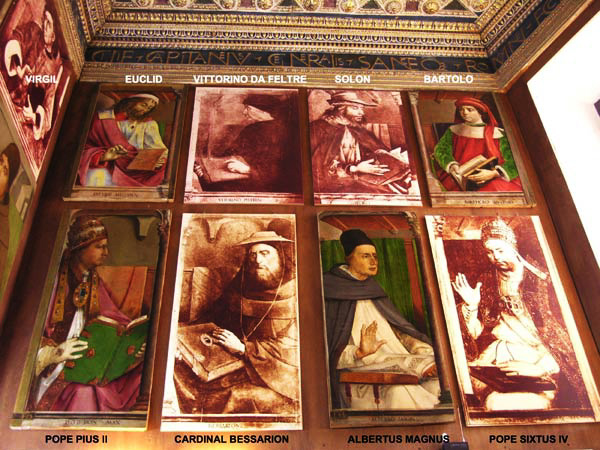
As shown in the diagram above, the wall had colorful paintings of some of the prominent religious leaders in this region. It had some of the famous poses, cardinals, and saints who made a massive contribution in the development of the Catholic Church.
It is a fact that the memory of these prominent religious leaders were kept in books and other oral forms. However, Harmanşah (2013, p. 118) says that it may be challenging to create a memory of Pope Pius II to a child without having an image to accompany the story.
When there is an image, the memory finds it easy to internalize the story. Parker argued that the memory can be stimulated to work efficiently when specific words are accompanied by images. It explains why most of the rhetoricians use imagery. They know that the mind is more receptive to visuals than oratory information.
To accompany their oration, they always consider the use of these visuals in what Parker referred to as rhetorical mnemotechnics (Parker 1997, 148). Architecture and mind can interact with each other cognitively and aesthetically to build up a meaning context.
Studiolo at Urbino does not just serve the purpose of providing shelter. It is also serve as a place where people are helped to keep the memory of some of the leaders that were highly cherished in the society. This architectural work is a reminder to the society that these people should always remain close to their heart because of the role they played in the faith they cherish.
Cardboard Cathedral by Shigeru Ban is one of the contemporary architectural designs developed after a catastrophic earthquake that destroyed Christ-Church Cathedral in New Zealand. The Cardboard Cathedral was built to replace Christ-Church Cathedral. The figures below show the images of the Cardboard Cathedral.
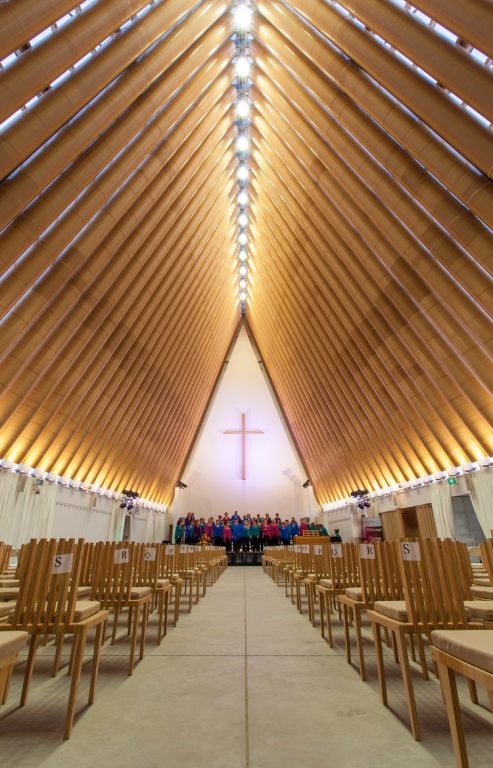
When designing the church, there was a need to ensure that this new building would have a closer look to the previous church that had been destroyed. Its functionality had to match the previous building, but with improved features that would help the building to withstand strong earthquakes.
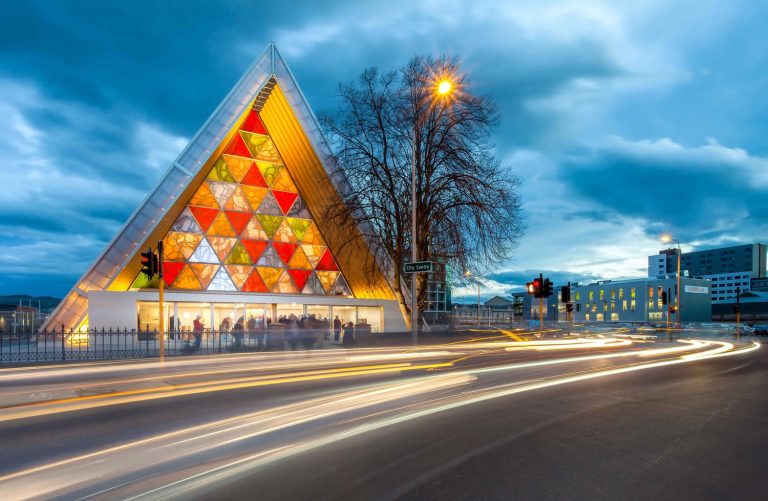
As shown in the figure above, the Cardboard Cathedral used a combination of modern technology and the ancient designs used in building Egyptian pyramids. It is important to note that the focus of the church was to have a building that would be able to withstand strong earthquakes that had become common in this region.
Shigeru Ban used the design to ensure that the church could withstand some of the strongest earthquakes. The structural design of the roof was not just meant to bring out beauty as shown in figure 3 above, but also to enhance its ability to withstand strong shake-up.
The use of cardboard tubes was meant to reduce the overall weight of the building, thereby improving its stability. The cardboard was also meant to maintain regulated temperatures of the room.
The argument by Douglas Parker that architecture has the ability to communicate ideas and enhance memory was made years before the Cardboard Cathedral was built. In fact, by the time the announcement about the intended construction of the church was made, Parker was already dead. Therefore, it would be interesting to determine the relevance of this building to his statement.
According to Harmanşah (2013, p. 83), there has been a lot of pressure from the society members that ancient buildings should be preserved as part of the country’s history. However, Christ-Church Cathedral was raising safety concerns at it had to be brought down. The Cardboard Cathedral had to help in maintaining the memory of the destroyed cathedral. A careful analysis of the two figures reveals some resemblance in design.
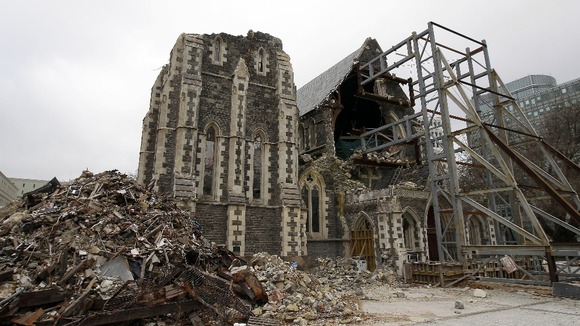
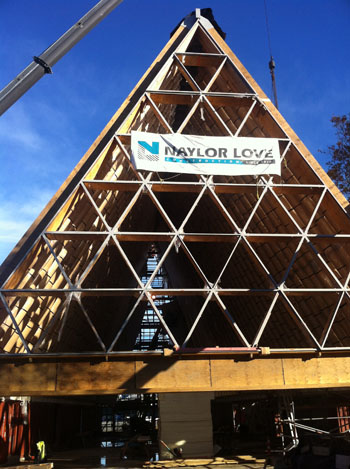
The architecture was determined to develop a structural design that would withstand the earthquakes, but still resemble the initial church. This way, it would be easy to maintain the memory of the church that was destroyed. Paker would refer to this as the architectural memory that helps the society retain a memory of what they highly valued.
The Cardboard Cathedral would therefore, be a constant reminder to the local community of the Christ-Church Cathedral that was destroyed by earthquake. In the first diagram, at the far end of the building is a cross. Paker said that an architecture can be used to pass ideas to people in a visual manner.
The cross at on the wall is passing an important piece of information. This is a Christian community and they believe that Jesus Christ died on the cross. The cross is meant to pass this idea to the congregation in a visual manner. This confirms the argument made by Parker several years ago about architecture.
The renaissance architecture of 15th to 17th centuries was revolutionary in nature. It was during this period that architects realized that they needed to do more than just construction of buildings for worship. They realized that there was a need to have symbolic structures. Coming immediately after Gothic architecture, the renaissance architecture was very common in Italy, England, Germany, and France (Watson 1993, p. 69).
It placed a lot of emphases on symmetry, proportions, niches, and domes. One of the unique factors of the renaissance architecture was its shift from the medieval architecture that never emphasized on sculptured figures.
It was during this period that architects realized that they had a role in passing specific idea to people using their designs. A lot of details were given to moldings and decorative details. The renaissance architecture must have defined the ideologies of Parker when he was arguing that architecture has the ability to communicate ideas.
It is important to understand that architecture goes beyond putting up of magnificent structures. It involves many other details that are meant to communicate ideas about our culture, history, or some issues that are of value to the society.
Architectural designs offer the best way of passing specific ideas to the society in the form of imagery. Rhetoricians have confirmed this in their statements that seek to compare specific issues in the environment with some of the ideas they are trying to pass to their congregation. It plays an important role in enhancing memory.
List of References
Galbraith, D 1999, Architectonics of imitation in Spenser, Daniel, and Drayton, University of Toronto Press, Toronto.
Harmanşah, O 2013, Cities and the shaping of memory in the ancient Near East, Cambridge University Press, Cambridge.
Parker, D 1997, ‘The Architectonics of Memory: On Built Form and Built Thought’, Leonardo, vol. 30, no. 2, pp. 147-152.
Watson, W 1993, The architectonics of meaning: Foundations of the new pluralism, University of Chicago Press, Chicago.